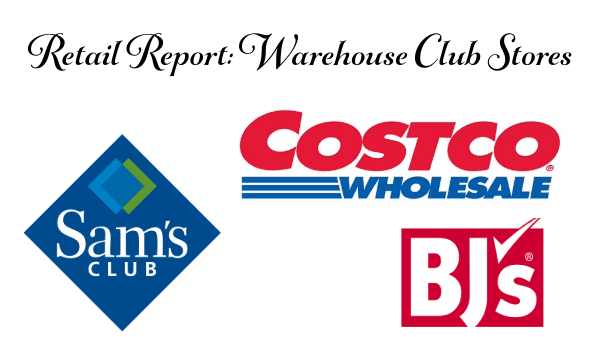Warehouse clubs came on the scene in the United States in the 1970s, offering a relatively small selection of value-priced food and nonfood products, mostly in large package sizes, in a no-frills store environment.
The format was originally designed to cater to small- to medium-sized businesses, with a goal of allowing customers to reduce operational costs and raise margins on resale.
The clubs, which operate on a membership model, also attract individuals who appreciate the low prices and changing assortments. Of Costco Wholesale Corporation’s BB #:150902 127.9 million members at the end of fiscal 2023, 71 million, or 55.5 percent, were households.
Despite less product assortments, the stores have been taking market share away from traditional supermarkets and supercenters over the last decade, with growth trajectories particularly strong since the start of the pandemic.
“There’s a little bit of everything, but not a lot of anything,” explains Brian Numainville, principal at The Feedback Group in Lake Success, NY.
“To a degree, it’s a one-stop shop if you can live with the variety available. I think the treasure hunt opportunity of finding a good deal on an item is also a draw, as long as you’re willing to perhaps buy a different brand.”
The prices are a big draw too; one of the leading players, BJ’s Wholesale Club, Inc., BB #:162875 its average basket of national brands costs 25 percent less than traditional supermarkets. The downside is shoppers usually have to purchase large product or pack sizes.
“It’s not singles who are shopping here,” contends Phil Lempert, the Supermarket Guru of Santa Monica, CA. “There can be a lot of waste, and that’s a concern.”
The Market Leaders
The warehouse club space is dominated by three major players—Costco Wholesale, Sam’s Clubs, and BJ’s Wholesale Club.
Costco Wholesale Corporation is headquartered in Issaquah, WA and leads the category. The company is a descendent of Price Club, founded in 1976 in San Diego, and a second chain called Costco, whose first location debuted in Seattle in 1983. The two merged in 1993 as PriceCostco and transitioned to simply Costco in 1997.
Near the end of last year, Costco had over 870 locations globally, including 600 in 47 U.S. states and Puerto Rico and another 180 in 9 Canadian provinces. As of the end of its latest fiscal year in September 2023, Costco had revenues of $237.7 billion. It ranked third in the National Retail Federation’s 2023 ranking of the top 100 U.S. retailers, behind Walmart and Amazon.
Costco garners 8 percent of U.S. grocery sales, translating to a strong $1,746 in sales per square foot, according to analyst dunnhumby, and it accounts for 25 percent of its customers’ grocery wallet. More than two-thirds (67 percent) of its customers feel a strong emotional connection to the brand.
Sam’s Club BB #:140368, a division of Bentonville, AR-based Walmart Inc., got its start in 1983 with its first club in Midwest City, OK. It has a U.S. reach similar to Costco’s, with 600 stores in 44 states and Puerto Rico. According to dunnhumby, it pulls in 4.4 percent of U.S. grocery sales, maintains a 20-percent share of its customers’ grocery wallet, and generates $883 in sales per square foot from stores that average about 134,000 square feet.
Similar to Costco, 58 percent of Sam’s Club customers feel a strong emotional connection to the brand. Walmart reported sales of $84.3 billion for the division in fiscal 2023, or 14 percent of corporate consolidated net sales.
The smallest of the three major players is BJ’s Wholesale Club, founded in 1984 as part of the Zayre discount department store chain. Its name is derived from the initials of Beverly Jean Weich, the daughter of Zayre’s president at the time, Mervyn Weich. The company was acquired and sold several times over the next few decades.
Today, BJ’s is a public company, headquartered in Marlborough, MA, with more than 240 stores in 20 states, mostly in the Northeast, along with 170 gas stations. It accounts for 0.8 percent of U.S. grocery sales, dunnhumby says, and a 22-percent share of its customers’ grocery wallet, garnering a strong emotional connection from 52 percent of its customers.
Revenues reached $19.3 billion in BJ’s latest fiscal year, generating $652 in sales per square foot, and counts more than 7 million households as members.
Financial intelligence firm CFRA Research estimates that Costco had 62 percent of the warehouse club market in the United States in 2022, versus Sam’s Club with 31 percent and BJ’s with 7 percent.
This is an excerpt from the feature story from the March/April 2024 issue of Produce Blueprints Magazine. Click here to read the whole issue.



